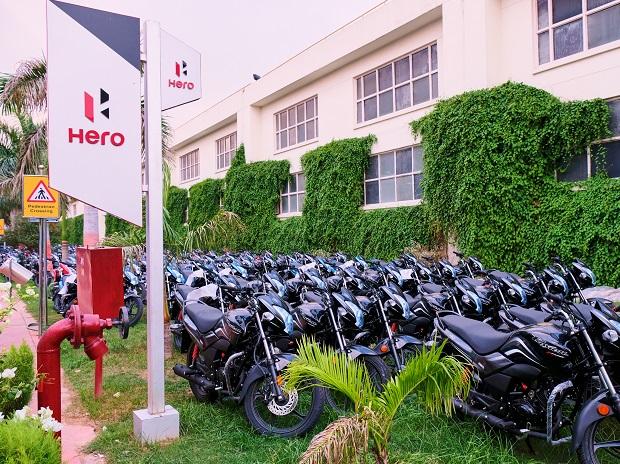[ad_1]
Hero MotoCorp on Tuesday reported a 2.41 per cent year-on-year rise in consolidated net profit to Rs 721.24 crore in the third quarter of 2022-23 amid weak demand, especially in the rural areas.
Its total income jumped by 2.05 per cent in Q3 (year-on-year) to Rs 8,300.3 crore. The company said the cost-cutting (savings) programme and multiple launches lined up during the next few quarters should help improve profitability.
Hero MotoCorp on Tuesday declared an interim dividend of Rs 65 per share for FY23. “The payment of interim dividend will be completed by March 9,” it added.
Himanshu Singh, research analyst, Prabhudas Lilladher, said Hero’s revenues in Q3 is according to his estimates but its EBITDA (earnings before interest, tax, depreciation and amortisation) margin was lower than his estimates as expenses rose due to higher discounting and investment in the EV segment.
Hero’s EBITDA for Q3 stood at Rs 924 crore. “According to our dealer checks, discounting is still ongoing, but the quantum has come down compared to last quarter’s levels,” Singh said.
Hero has been struggling in its core entry-level segment, owing to weakness in rural markets due to affordability issues, he noted. “This has led to a domestic market share loss of 400bps since FY19, to 32 per cent currently,” he said.
“The company has recently started dispatches of Hero Vida and launched a new scooter brand — Xoom, at aggressive pricing to gain traction in the scooter segment. Going ahead, rural recovery, exports, premiumisation, and EV volumes will remain the key growth drivers,” he said.

Mitul Shah, head of research at Reliance Securities, said he expected volume pressure on the domestic two-wheeler industry in the near term while revival in demand is expected in rural areas in the second half of FY24.
He said Hero will perform better, in revenue as well as volume terms, in the next two years on the back of its leadership position, revival in urban markets and likely improvement in rural sales from the “current low level”.
Shah said pressure on net profit will continue due to intense competition and very slow improvement in the overall two-wheeler industry.
Niranjan Gupta, chief financial officer (CFO), Hero MotoCorp, said, “We have started recovering our market shares and expect this journey to continue, backed by exciting launches lined up over the next few quarters, especially in the premium segment. This, coupled with our renewed focus on savings programme should also help in improving our margin profile going forward.”
On October 7 last year, India’s largest two-wheeler maker had launched its first electric two wheeler called Vida V1. However, only 214 of its units have been sold in India till December 31, according to data from industry body Siam.
Meanwhile, Gupta said the company was excited about its electric vehicle (EV) programme, with Vida being established as a “premium and aspirational” brand. “We are planning to roll this (Vida) out across multiple cities in FY24. Our R&D (research and development) teams are working on accelerated portfolio expansion in the EV space,” he noted.
The recently presented Union Budget, with its focus on increasing capex (capital expenditure) investment on one hand and disposable income on the other, augurs well for the growth of the economy as well as the auto sector, he said. “We expect the two-wheeler industry to clock double digit revenue growth in FY24,” he added.
[ad_2]
Source link



